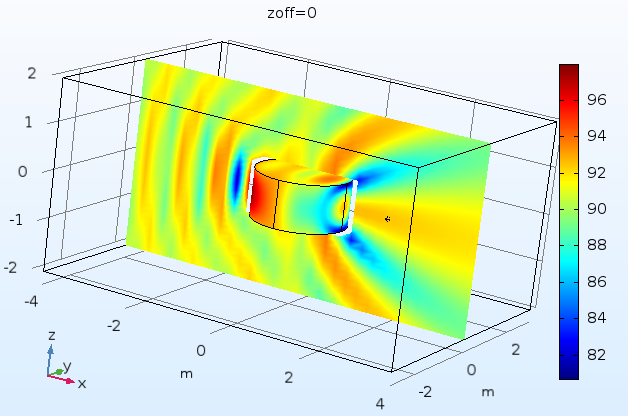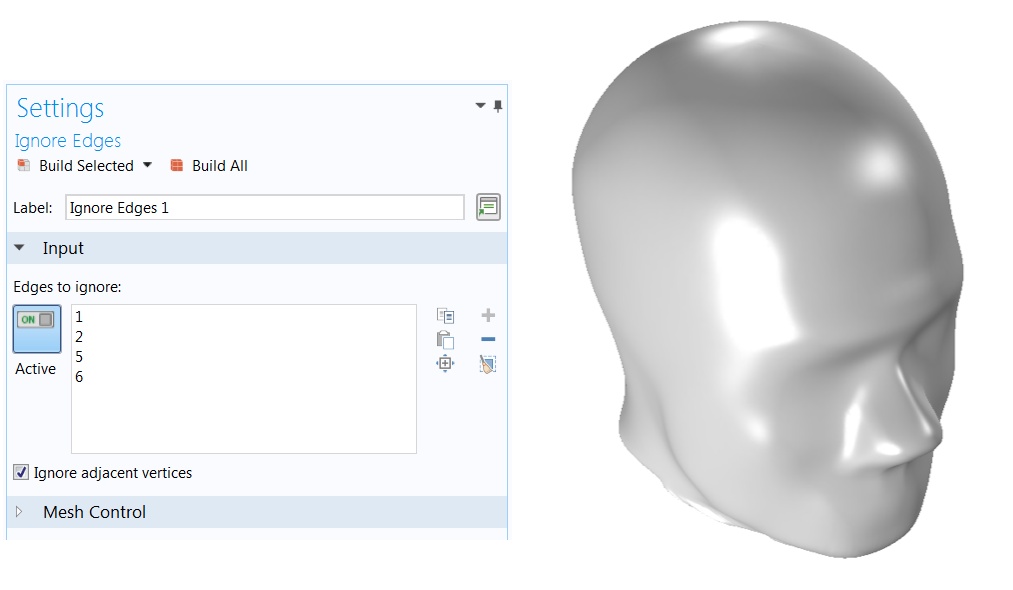

The user interface for the Symmetry for Surface-to-Surface Radiation feature with the Two perpendicular planes of symmetry option selected for the type of symmetry. A check box is available to show/hide the planes in the Graphics window. This is meant to make it easier when defining the plane(s) for all types of symmetry. In 3D, you can define either two perpendicular planes with an intersection parallel to one of the axes or three perpendicular planes parallel to the axis.Īdditionally, in the Symmetry for Surface-to-Surface Radiation global feature, you can visualize the plane(s) of symmetry in the Graphics window along with the geometry. In 2D models, two perpendicular planes can be defined. This new feature can be used to take advantage of multiple symmetry planes in order to reduce the mesh size and requires fewer computational resources. The Symmetry for Surface-to-Surface Radiation global feature contains new options available for 2D and 3D models when either a Heat Transfer with Surface-to-Surface Radiation interface or a Surface-to-Surface Radiation interface is active.

Screenshot ansehen Symmetrical Surface-to-Surface Radiation Using Two or Three Perpendicular Planes Additionally, two new refrigerant materials have been added in the Liquid and Gases material database: R-134A and R-22. Material properties include heat capacity, thermal conductivity, density, water content, vapor permeability, etc. These materials make it possible to quickly set up heat and moisture models using realistic material properties for building materials (see image). The heat sink part selections in the Heat Transfer Module's Part Library, where a heat sink with pins for cooling has been selected.Īpplication Library path for an example that uses a part from the Heat Transfer Module's Part Library: Heat_Transfer_Module/Tutorials/Forced_and_Natural_Convection/chip_cooling Building and Refrigerant MaterialsĪ Building Material Library, which is now available with the Heat Transfer Module, provides typical hygroscopic and thermal properties of materials commonly used in buildings. The Heat Source and Boundary Heat Source features can also act as perturbation loads if the Harmonic Perturbation option is selected. Additionally, a Harmonic Perturbation subfeature can be added under the Temperature feature for prescribing harmonic variations. The heat transfer interfaces now support a Frequency-Domain Perturbation solver that computes the harmonic temperature variations around an equilibrium state. This time-dependent periodic problem may be replaced by an equivalent linear steady-state problem in the frequency domain, which is far less computationally expensive. When subjected to periodic sinusoidal heat loads at a given frequency, the temperature response of a body can be assumed to be periodic, sinusoidal, and of the same frequency around an equilibrium temperature. The modeling of the evaporation of water in a glass due to warm, dry airflow is greatly simplified using the predefined features for heat and moisture transport.Īpplication Library path for an example using the new features for heat and moisture transport: Heat_Transfer_Module/Phase_Change_/evaporative_cooling Heat Transfer in the Frequency Domain This is now easier to account for using the Wet surface and Moist surface boundary conditions.

Not only do these mechanisms influence the material balance between vapor and water, but they also greatly influence the energy balance due to latent heat. Water condensation and evaporation on surfaces may also play a significant role in applications simulating moisture transport in air.

In this case, moisture and heat transport in air are automatically coupled in domains where building materials are defined. The two interfaces can be coupled using the Heat and Moisture multiphysics feature. This feature handles moisture transport by convection and diffusion in air as well as turbulent mixing caused by eddy diffusivity when you need to account for turbulent moisture convection. A Moist Air feature is available in the Heat Transfer in Moist Air and Moisture Transport interfaces. Heat and Moisture TransportĬOMSOL Multiphysics ® version 5.3 includes several features to further extend the modeling of heat and moisture transport in air. Learn about these heat transfer features and more below. For users of the Heat Transfer Module, COMSOL Multiphysics ® version 5.3 includes new functionality to model heat and moisture transport in air, a new solver for modeling heat transfer in the frequency domain, and heat sink geometry parts to more easily create certain geometries.


 0 kommentar(er)
0 kommentar(er)
